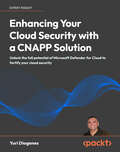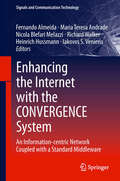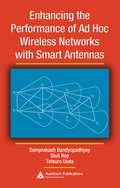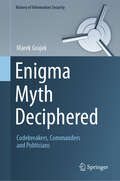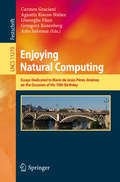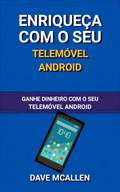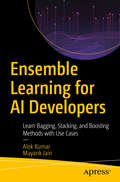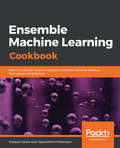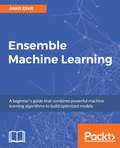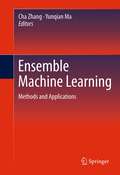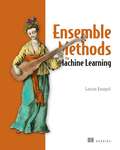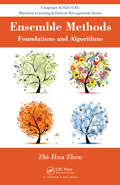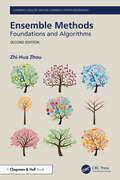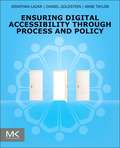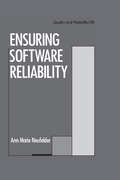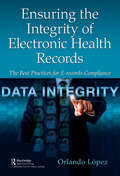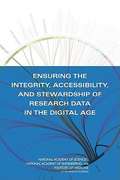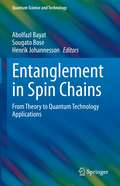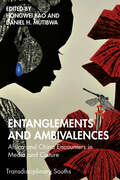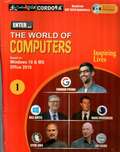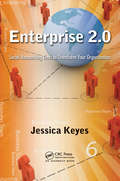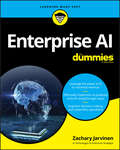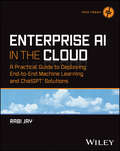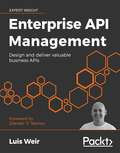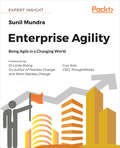- Table View
- List View
Enhancing Your Cloud Security with a CNAPP Solution: Unlock the full potential of Microsoft Defender for Cloud to fortify your cloud security
by Yuri DiogenesImplement the entire CNAPP lifecycle from designing, planning, adopting, deploying, and operationalizing to enhance your organization's overall cloud security posture.Key FeaturesMaster the CNAPP lifecycle from planning to operationalization using real-world practical scenarios. Dive deep into the features of Microsoft's Defender for Cloud to elevate your organization’s security posture. Explore hands-on examples and implementation techniques from a leading expert in the cybersecurity industryBook DescriptionCloud security is a pivotal aspect of modern IT infrastructure, essential for safeguarding critical data and services. This comprehensive book explores Cloud Native Application Protection Platform (CNAPP), guiding you through adopting, deploying, and managing these solutions effectively. Written by Yuri Diogenes, Principal PM at Microsoft, who has been with Defender for Cloud (formerly Azure Security Center) since its inception, this book distills complex concepts into actionable knowledge making it an indispensable resource for Cloud Security professionals. The book begins with a solid foundation detailing the why and how of CNAPP, preparing you for deeper engagement with the subject. As you progress, it delves into practical applications, including using Microsoft Defender for Cloud to enhance your organization's security posture, handle multicloud environments, and integrate governance and continuous improvement practices into your operations. Further, you'll learn how to operationalize your CNAPP framework, emphasizing risk management & attack disruption, leveraging AI to enhance security measures, and integrating Defender for Cloud with Microsoft Security Exposure Management. By the end, you'll be ready to implement and optimize a CNAPP solution in your workplace, ensuring a robust defense against evolving threats.What you will learnImplement Microsoft Defender for Cloud across diverse IT environmentsHarness DevOps security capabilities to tighten cloud operationsLeverage AI tools such as Microsoft Copilot for Security to help remediate security recommendations at scaleIntegrate Microsoft Defender for Cloud with other XDR, SIEM (Microsoft Sentinel) and Microsoft Security Exposure ManagementOptimize your cloud security posture with continuous improvement practicesDevelop effective incident response plans and proactive threat hunting techniquesWho this book is forThis book is aimed at Cloud Security Professionals that work with Cloud Security, Posture Management, or Workload Protection. DevOps Engineers that need to have a better understanding of Cloud Security Tools and SOC Analysts that need to understand how CNAPP can enhance their threat hunting capabilities can also benefit from this book. Basic knowledge of Cloud Computing, including Cloud Providers such as Azure, AWS, and GCP is assumed.
Enhancing the Internet with the CONVERGENCE System
by Richard Walker Fernando Almeida Maria Teresa Andrade Nicola Blefari Melazzi Heinrich Hussmann Iakovos S. VenierisConvergence proposes the enhancement of the Internet with a novel, content-centric, publish-subscribe service model based on the versatile digital item (VDI): a common container for all kinds of digital content, including digital representations of real-world resources. VDIs will serve the needs of the future Internet, providing a homogeneous method for handling structured information, incorporating security and privacy mechanisms. CONVERGENCE subsumes the following areas of research: · definition of the VDI as a new fundamental unit of distribution and transaction; · content-centric networking functionality to complement or replace IP-address-based routing; · security and privacy protection mechanisms; · open-source middleware, including a community dictionary service to enable rich semantic searches; · applications, tested under real-life conditions. This book shows how CONVERGENCE allows publishing, searching and subscribing to any content. Creators can publish their content by wrapping it and its descriptions into a VDI, setting rights for other users to access this content, monitor its use, and communicate with people using it; they may even update or revoke content previously published. Access to content is more efficient, as search engines exploit VDI metadata for indexing, and the network uses the content name to ensure users always access the copy closest to them. Every node in the network is a content cache; handover is easy; multicast is natural; peer-to-peer is built-in; time/space-decoupling is possible. Application developers can exploit CONVERGENCE's middleware and network without having to resort to proprietary/ad hoc solutions for common/supporting functionality. Operators can use the network more efficiently, better controlling information transfer and related revenues flows. Network design, operation and management are simplified by integrating diverse functions and avoiding patches and stopgap solutions. Whether as a text for graduate students working on the future of the Internet, or a resource for practitioners providing e-commerce or multimedia services, or scientists defining new technologies, CONVERGENCE will make a valuable contribution to the future shape of the Internet.
Enhancing the Performance of Ad Hoc Wireless Networks with Smart Antennas
by Siuli Roy Somprakash Bandyopadhyay Tetsuro UedaA large portion of the network capacity of an ad hoc network can be wasted by the medium access mechanisms of omni-directional antennas. To overcome this problem, researchers propose the use of directional or adaptive antennas that largely reduce radio interference, improving the utilization of wireless medium and the resulting network throughput.
Enigma Myth Deciphered: Codebreakers, Commanders and Politicians (History of Information Security)
by Marek GrajekThis unique new volume analyses source documents both previously known and recently declassified, generating an extremely broad and original synthesis about Enigma. The author uses his experience as a cryptologist to fill in gaps in the sources or to correct misguided interpretations, also adding the passion of a journalist, drawing a vivid picture of the characters and the story. As a Pole, he presents this story through the lens of the fate of the Polish mathematicians who were the first to break the cipher as early as 1932 and laid the foundations for the subsequent Allied success. The book’s coverage ranges from the mathematical foundations of codebreaking, through the complex fates of the people and organisations involved in the attacks on the Enigma ciphers, the impact of decrypts on the fate of the major campaigns of the Second World War, to the role that wartime cryptology and codebreakers played in the birth of digital civilisation. The Polish mathematicians’ story is presented in the full context of the struggle with the cipher, including the complex interplay between codebreakers, military commanders and politicians of the UK, US, Poland, France, and the Third Reich. By looking at events through the eyes of a cryptologist rather than solely as a historian, the reader is given a glimpse into the backstage of the cryptologic workshop; a better understanding of the scale and nature of the challenges codebreakers faced; and insights into their responses to those challenges, as well as the emotions, dilemmas, disappointments, and triumphs involved.
Enjoying Natural Computing: Essays Dedicated to Mario de Jesús Pérez-Jiménez on the Occasion of His 70th Birthday (Lecture Notes in Computer Science #11270)
by Grzegorz Rozenberg Arto Salomaa Carmen Graciani Agustín Riscos-Núñez Gheorghe PăunThis Festschrift is in honor of Mario de Jesús Pérez-Jiménez, Professor in the Department of Computer Science of University of Seville, Spain, on the occasion of his 70th birthday. The title of this volume reflects both his main research area, viz., Natural Computing, and the guiding principle of his functioning: “once you choose to do something, enjoy doing it".The respect that Professor Mario de Jesús Pérez-Jiménez enjoys in the scientific community was well demonstrated by the enthusiastic response received to the request to contribute to this book. The contributions by more than 70 authors from 15 countries cover a wide spectrum of research areas and reflect well the broad range of research interests of Professor Mario de Jesús Pérez-Jiménez. The research areas presented in this Festschrift include membrane computing, spiking neural networks, phylogenetic networks, ant colonies optimization, workbench for biocomputing, reaction systems, entropy of computation, rewriting systems, and insertion-deletion systems.
Enriqueça com o seu telemóvel Android: Ganhe dinheiro com o seu telemóvel Android
by Dave McAllenPare de se impedir de ganhar dinheiro. É impossível estar falido se tiver um dispositivo Android. Cada vez mais pessoas dão por si a reclamar, quer seja contra o governo, as condições de vida, o dinheiro, os rendimentos, os privilégios, a experiência, as habilidades, a falta de emprego ou, por outro lado, a recuperar de tudo isto. Mas, apesar da ascensão sem precedentes, o nosso entendimento da reclamação está aprisionado em raciocínios infundados do século passado, reclamação como um protesto silencioso ou como um meio de obter alguma atenção, e também em estratégias desatualizadas. Desafiando a ideia de tais reclamantes, Dave McAllen oferece uma perspetiva radical e inovadora, argumentando que reclamar da sorte de alguém não é válido na nossa era digital, em que quase todas as pessoas possuem um telefone Android. Ele oferece alguns exemplos daquilo que pode fazer com o seu telefone e ganhar dinheiro e mostra como ver as coisas desta forma pode ajudá-lo a não se desviar do caminho para o sucesso. Fique então a saber porque é que ele diz que os obstáculos para o seu sucesso são você mesmo.
Ensemble Learning for AI Developers: Learn Bagging, Stacking, and Boosting Methods with Use Cases
by Alok Kumar Mayank JainUse ensemble learning techniques and models to improve your machine learning results.Ensemble Learning for AI Developers starts you at the beginning with an historical overview and explains key ensemble techniques and why they are needed. You then will learn how to change training data using bagging, bootstrap aggregating, random forest models, and cross-validation methods. Authors Kumar and Jain provide best practices to guide you in combining models and using tools to boost performance of your machine learning projects. They teach you how to effectively implement ensemble concepts such as stacking and boosting and to utilize popular libraries such as Keras, Scikit Learn, TensorFlow, PyTorch, and Microsoft LightGBM. Tips are presented to apply ensemble learning in different data science problems, including time series data, imaging data, and NLP. Recent advances in ensemble learning are discussed. Sample code is provided in the form of scripts and the IPython notebook.What You Will LearnUnderstand the techniques and methods utilized in ensemble learningUse bagging, stacking, and boosting to improve performance of your machine learning projects by combining models to decrease variance, improve predictions, and reduce biasEnhance your machine learning architecture with ensemble learningWho This Book Is ForData scientists and machine learning engineers keen on exploring ensemble learning
Ensemble Machine Learning Cookbook: Over 35 practical recipes to explore ensemble machine learning techniques using Python
by Dipayan Sarkar Vijayalakshmi NatarajanThis book is for data scientists, machine learning developers, and deep learning enthusiasts who want to deep dive into machine learning algorithms to build powerful ensemble models. Working knowledge of Python programming and basic statistics is expected.
Ensemble Machine Learning: A beginner's guide that combines powerful machine learning algorithms to build optimized models
by Radovan Kavicky Apeksha Jain Ankit DixitKey Features Learn how to maximize popular machine learning algorithms such as random forests, decision trees, AdaBoost, K-nearest neighbor, and more Get a practical approach to building efficient machine learning models using ensemble techniques with real-world use cases Implement concepts such as boosting, bagging, and stacking ensemble methods to improve your model prediction accuracy Book Description Ensembling is a technique of combining two or more similar or dissimilar machine learning algorithms to create a model that delivers superior prediction power. This book will show you how you can use many weak algorithms to make a strong predictive model. This book contains Python code for different machine learning algorithms so that you can easily understand and implement it in your own systems. This book covers different machine learning algorithms that are widely used in the practical world to make predictions and classifications. It addresses different aspects of a prediction framework, such as data pre-processing, model training, validation of the model, and more. You will gain knowledge of different machine learning aspects such as bagging (decision trees and random forests), Boosting (Ada-boost) and stacking (a combination of bagging and boosting algorithms). Then you’ll learn how to implement them by building ensemble models using TensorFlow and Python libraries such as scikit-learn and NumPy. As machine learning touches almost every field of the digital world, you’ll see how these algorithms can be used in different applications such as computer vision, speech recognition, making recommendations, grouping and document classification, fitting regression on data, and more. By the end of this book, you’ll understand how to combine machine learning algorithms to work behind the scenes and reduce challenges and common problems. What you will learn -Understand why bagging improves classification and regression performance -Get to grips with implementing AdaBoost and different variants of this algorithm -See the bootstrap method and its application to bagging -Perform regression on Boston housing data using scikit-learn and NumPy -Know how to use Random forest for IRIS data classification -Get to grips with the classification of sonar dataset using KNN, Perceptron, and Logistic Regression -Discover how to improve prediction accuracy by fine-tuning the model parameters -Master the analysis of a trained predictive model for over-fitting/under-fitting cases
Ensemble Machine Learning: Methods and Applications
by Cha Zhang Yunqian MaIt is common wisdom that gathering a variety of views and inputs improves the process of decision making, and, indeed, underpins a democratic society. Dubbed "ensemble learning" by researchers in computational intelligence and machine learning, it is known to improve a decision system's robustness and accuracy. Now, fresh developments are allowing researchers to unleash the power of ensemble learning in an increasing range of real-world applications. Ensemble learning algorithms such as "boosting" and "random forest" facilitate solutions to key computational issues such as face recognition and are now being applied in areas as diverse as object tracking and bioinformatics. Responding to a shortage of literature dedicated to the topic, this volume offers comprehensive coverage of state-of-the-art ensemble learning techniques, including the random forest skeleton tracking algorithm in the Xbox Kinect sensor, which bypasses the need for game controllers. At once a solid theoretical study and a practical guide, the volume is a windfall for researchers and practitioners alike.
Ensemble Methods for Machine Learning
by Gautam KunapuliEnsemble machine learning combines the power of multiple machine learning approaches, working together to deliver models that are highly performant and highly accurate.Inside Ensemble Methods for Machine Learning you will find: Methods for classification, regression, and recommendations Sophisticated off-the-shelf ensemble implementations Random forests, boosting, and gradient boosting Feature engineering and ensemble diversity Interpretability and explainability for ensemble methods Ensemble machine learning trains a diverse group of machine learning models to work together, aggregating their output to deliver richer results than a single model. Now in Ensemble Methods for Machine Learning you&’ll discover core ensemble methods that have proven records in both data science competitions and real-world applications. Hands-on case studies show you how each algorithm works in production. By the time you're done, you'll know the benefits, limitations, and practical methods of applying ensemble machine learning to real-world data, and be ready to build more explainable ML systems. About the Technology Automatically compare, contrast, and blend the output from multiple models to squeeze the best results from your data. Ensemble machine learning applies a &“wisdom of crowds&” method that dodges the inaccuracies and limitations of a single model. By basing responses on multiple perspectives, this innovative approach can deliver robust predictions even without massive datasets. About the Book Ensemble Methods for Machine Learning teaches you practical techniques for applying multiple ML approaches simultaneously. Each chapter contains a unique case study that demonstrates a fully functional ensemble method, with examples including medical diagnosis, sentiment analysis, handwriting classification, and more. There&’s no complex math or theory—you&’ll learn in a visuals-first manner, with ample code for easy experimentation! What&’s Inside Bagging, boosting, and gradient boosting Methods for classification, regression, and retrieval Interpretability and explainability for ensemble methods Feature engineering and ensemble diversity About the Reader For Python programmers with machine learning experience. About the Author Gautam Kunapuli has over 15 years of experience in academia and the machine learning industry. Table of Contents PART 1 - THE BASICS OF ENSEMBLES 1 Ensemble methods: Hype or hallelujah? PART 2 - ESSENTIAL ENSEMBLE METHODS 2 Homogeneous parallel ensembles: Bagging and random forests 3 Heterogeneous parallel ensembles: Combining strong learners 4 Sequential ensembles: Adaptive boosting 5 Sequential ensembles: Gradient boosting 6 Sequential ensembles: Newton boosting PART 3 - ENSEMBLES IN THE WILD: ADAPTING ENSEMBLE METHODS TO YOUR DATA 7 Learning with continuous and count labels 8 Learning with categorical features 9 Explaining your ensembles
Ensemble Methods: Foundations and Algorithms (Chapman & Hall/CRC Machine Learning & Pattern Recognition)
by Zhi-Hua ZhouAn up-to-date, self-contained introduction to a state-of-the-art machine learning approach, Ensemble Methods: Foundations and Algorithms shows how these accurate methods are used in real-world tasks. It gives you the necessary groundwork to carry out further research in this evolving field.After presenting background and terminology, the book cover
Ensemble Methods: Foundations and Algorithms (Chapman & Hall/CRC Machine Learning & Pattern Recognition)
by Zhi-Hua ZhouEnsemble methods that train multiple learners and then combine them to use, with Boosting and Bagging as representatives, are well-known machine learning approaches. It has become common sense that an ensemble is usually significantly more accurate than a single learner, and ensemble methods have already achieved great success in various real-world tasks.Twelve years have passed since the publication of the first edition of the book in 2012 (Japanese and Chinese versions published in 2017 and 2020, respectively). Many significant advances in this field have been developed. First, many theoretical issues have been tackled, for example, the fundamental question of why AdaBoost seems resistant to overfitting gets addressed, so that now we understand much more about the essence of ensemble methods. Second, ensemble methods have been well developed in more machine learning fields, e.g., isolation forest in anomaly detection, so that now we have powerful ensemble methods for tasks beyond conventional supervised learning.Third, ensemble mechanisms have also been found helpful in emerging areas such as deep learning and online learning. This edition expands on the previous one with additional content to reflect the significant advances in the field, and is written in a concise but comprehensive style to be approachable to readers new to the subject.
Ensuring Digital Accessibility through Process and Policy
by Jonathan Lazar Anne Taylor Daniel GoldsteinThis book provides readers with a resource to digital accessibility from both a technical and policy perspective.
Ensuring Software Reliability (Quality and Reliability #Vol. 38)
by Ann Marie NeufelderExplains how software reliability can be applied to software programs of all sizes, functions and languages, and businesses. This text provides real-life examples from industries such as defence engineering, and finance. It is aimed at software and quality assurance engineers and graduate students.
Ensuring the Integrity of Electronic Health Records: The Best Practices for E-records Compliance
by Orlando LópezData integrity is a critical aspect to the design, implementation, and usage of any system which stores, processes, or retrieves data. The overall intent of any data integrity technique is the same: ensure data is recorded exactly as intended and, upon later retrieval, ensure the data is the same as it was when originally recorded. Any alternation to the data is then traced to the person who made the modification. The integrity of data in a patient’s electronic health record is critical to ensuring the safety of the patient. This book is relevant to production systems and quality control systems associated with the manufacture of pharmaceuticals and medical device products and updates the practical information to enable better understanding of the controls applicable to e-records. The book highlights the e-records suitability implementation and associated risk-assessed controls, and e-records handling. The book also provides updated regulatory standards from global regulatory organizations such as MHRA, Medicines and Healthcare Products Regulatory Agency (UK); FDA, Food and Drug Administration (US); National Medical Products Association (China); TGA, Therapeutic Goods Administration (Australia); SIMGP, Russia State Institute of Medicines and Good Practices; and the World Health Organization, to name a few.
Ensuring the Integrity, Accessibility, and Stewardship of Research Data in the Digital Age
by Institute of MedicineAs digital technologies are expanding the power and reach of research, they are also raising complex issues. These include complications in ensuring the validity of research data; standards that do not keep pace with the high rate of innovation; restrictions on data sharing that reduce the ability of researchers to verify results and build on previous research; and huge increases in the amount of data being generated, creating severe challenges in preserving that data for long-term use. Ensuring the Integrity, Accessibility, and Stewardship of Research Data in the Digital Age examines the consequences of the changes affecting research data with respect to three issues - integrity, accessibility, and stewardship-and finds a need for a new approach to the design and the management of research projects. The report recommends that all researchers receive appropriate training in the management of research data, and calls on researchers to make all research data, methods, and other information underlying results publicly accessible in a timely manner. The book also sees the stewardship of research data as a critical long-term task for the research enterprise and its stakeholders. Individual researchers, research institutions, research sponsors, professional societies, and journals involved in scientific, engineering, and medical research will find this book an essential guide to the principles affecting research data in the digital age.
Entanglement in Spin Chains: From Theory to Quantum Technology Applications (Quantum Science and Technology)
by Abolfazl Bayat Sougato Bose Henrik JohannessonThis book covers recent developments in the understanding, quantification, and exploitation of entanglement in spin chain models from both condensed matter and quantum information perspectives. Spin chain models are at the foundation of condensed matter physics and quantum information technologies and elucidate many fundamental phenomena such as information scrambling, quantum phase transitions, and many-body localization. Moreover, many quantum materials and emerging quantum devices are well described by spin chains. Comprising accessible, self-contained chapters written by leading researchers, this book is essential reading for graduate students and researchers in quantum materials and quantum information. The coverage is comprehensive, from the fundamental entanglement aspects of quantum criticality, non-equilibrium dynamics, classical and quantum simulation of spin chains through to their experimental realizations, and beyond into machine learning applications.
Entanglements and Ambivalences: Africa and China Encounters in Media and Culture (Transdisciplinary Souths)
by Hongwei Bao and Daniel H. MutibwaThis book explores the media and cultural exchanges between Africa and China in the twenty-first century against the backdrop of the rise of Africa and China in global geopolitics. It situates these cultural encounters in historical and contemporary contexts and through the critical lens of the Global South. It identifies a rising Global South consciousness, despite lingering historical entanglements and emotional ambivalences that continue to characterise Africa-China relations.Bringing together scholars from various disciplines and from different parts of the world, this book examines a wide range of cultural expressions such as arts, literature, translated works, traditional and digital media artefacts and services, and film festivals. It also interrogates emerging cultural interactions, experiences and practices engendered by the increasingly digitalised information and communication technology infrastructure underpinning Africa-China connections and links. In doing so, the book contributes to a more nuanced understanding of Africa-China relations today and the concept of the Global South.
Enter The World Of Computers: Based on Windows 10 and MS Office 2016 class 1
by Kartikey KumarEnter The World Of Computers, for classes 1 to 8, based on NEP 2020 guidelines, introduces primary and middle school students to the world of Computers and Information Technology in a carefully graded manner. It helps the students see computer as their friend, so that they not only understand but also use it with ease and to their advantage.
Enterprise 2.0: Social Networking Tools to Transform Your Organization
by Jessica KeyesEnterprise 2.0 (E 2.0) has caught the collective imagination of executives who are innovating to radically change the face of business. E 2.0 takes full benefit of social networking, including blogs, discussion boards, mashups, and all that is sharable and combinable.Examining organizations and their social activities, Enterprise 2.0: Social N
Enterprise AI For Dummies
by Zachary JarvinenMaster the application of artificial intelligence in your enterprise with the book series trusted by millions In Enterprise AI For Dummies, author Zachary Jarvinen simplifies and explains to readers the complicated world of artificial intelligence for business. Using practical examples, concrete applications, and straightforward prose, the author breaks down the fundamental and advanced topics that form the core of business AI. Written for executives, managers, employees, consultants, and students with an interest in the business applications of artificial intelligence, Enterprise AI For Dummies demystifies the sometimes confusing topic of artificial intelligence. No longer will you lag behind your colleagues and friends when discussing the benefits of AI and business. The book includes discussions of AI applications, including : · Streamlining business operations · Improving decision making · Increasing automation · Maximizing revenue The For Dummies series makes topics understandable, and as such, this book is written in an easily understood style that’s perfect for anyone who seeks an introduction to a usually unforgiving topic.
Enterprise AI in the Cloud: A Practical Guide to Deploying End-to-End Machine Learning and ChatGPT Solutions (Tech Today)
by Rabi JayEmbrace emerging AI trends and integrate your operations with cutting-edge solutions Enterprise AI in the Cloud: A Practical Guide to Deploying End-to-End Machine Learning and ChatGPT Solutions is an indispensable resource for professionals and companies who want to bring new AI technologies like generative AI, ChatGPT, and machine learning (ML) into their suite of cloud-based solutions. If you want to set up AI platforms in the cloud quickly and confidently and drive your business forward with the power of AI, this book is the ultimate go-to guide. The author shows you how to start an enterprise-wide AI transformation effort, taking you all the way through to implementation, with clearly defined processes, numerous examples, and hands-on exercises. You’ll also discover best practices on optimizing cloud infrastructure for scalability and automation.Enterprise AI in the Cloud helps you gain a solid understanding of: AI-First Strategy: Adopt a comprehensive approach to implementing corporate AI systems in the cloud and at scale, using an AI-First strategy to drive innovation State-of-the-Art Use Cases: Learn from emerging AI/ML use cases, such as ChatGPT, VR/AR, blockchain, metaverse, hyper-automation, generative AI, transformer models, Keras, TensorFlow in the cloud, and quantum machine learning Platform Scalability and MLOps (ML Operations): Select the ideal cloud platform and adopt best practices on optimizing cloud infrastructure for scalability and automation AWS, Azure, Google ML: Understand the machine learning lifecycle, from framing problems to deploying models and beyond, leveraging the full power of Azure, AWS, and Google Cloud platforms AI-Driven Innovation Excellence: Get practical advice on identifying potential use cases, developing a winning AI strategy and portfolio, and driving an innovation culture Ethical and Trustworthy AI Mastery: Implement Responsible AI by avoiding common risks while maintaining transparency and ethics Scaling AI Enterprise-Wide: Scale your AI implementation using Strategic Change Management, AI Maturity Models, AI Center of Excellence, and AI Operating Model Whether you're a beginner or an experienced AI or MLOps engineer, business or technology leader, or an AI student or enthusiast, this comprehensive resource empowers you to confidently build and use AI models in production, bridging the gap between proof-of-concept projects and real-world AI deployments. With over 300 review questions, 50 hands-on exercises, templates, and hundreds of best practice tips to guide you through every step of the way, this book is a must-read for anyone seeking to accelerate AI transformation across their enterprise.
Enterprise API Management: Design and deliver valuable business APIs
by Luis Weir Zdenek "Z" NemecA strategy and implementation guide for building, deploying, and managing APIs Key Features Comprehensive, end-to-end guide to business-driven enterprise APIs Distills years of experience with API and microservice strategies Provides detailed guidance on implementing API-led architectures in any business Book Description APIs are the cornerstone of modern, agile enterprise systems. They enable access to enterprise services from a wide variety of devices, act as a platform for innovation, and open completely new revenue streams. Enterprise API Management shows how to define the right architecture, implement the right patterns, and define the right organization model for business-driven APIs. Drawing on his experience of developing API and microservice strategies for some of the world's largest companies, Luis Weir explains how APIs deliver value across an enterprise. The book explores the architectural decisions, implementation patterns, and management practices for successful enterprise APIs, as well as providing clear, actionable advice on choosing and executing the right API strategy in your enterprise. With a relentless focus on creating business value, Luis Weir reveals an effective method for planning, building, and running business products and services with APIs. What you will learn Create API strategies to deliver business value Monetize APIs, promoting them through public marketplaces and directories Develop API-led architectures, applying best practice architecture patterns Choose between REST, GraphQL, and gRPC-style API architectures Manage APIs and microservices through the complete life cycle Deploy APIs and business products, as well as Target Operating Models Lead product-based organizations to embrace DevOps and focus on delivering business capabilities Who this book is for Architects, developers, and technology executives who want to deliver successful API strategies that bring business value.
Enterprise Agility: Being Agile in a Changing World
by Sunil MundraEnterprise Agility is practical framework for enhancing Agility and equipping your company with the tools to survive. Key Features● Prepare your company to navigate the rapidly-moving business world● Enhance Agility in every component of your organization● Build a framework that meets the unique requirements of your enterpriseBook DescriptionThe biggest challenge enterprises face today is dealing with fast-paced change in all spheres of business. Enterprise Agility shows how an enterprise can address this challenge head on and thrive in the dynamic environment. Avoiding the mechanistic construction of existing enterprises that focus on predictability and certainty, Enterprise Agility delivers practical advice for responding and adapting to the scale and accelerating pace of disruptive change in the business environment.Agility is a fundamental shift in thinking about how enterprises work to effectively deal with disruptive changes in the business environment. The core belief underlying agility is that enterprises are open and living systems. These living systems, also known as complex adaptive systems (CAS), are ideally suited to deal with change very effectively.Agility is to enterprises what health is to humans. There are some foundational principles that can be broadly applied, but the definition of healthy is very specific to each individual. Enterprise Agility takes a similar approach with regard to agility: it suggests foundational practices to improve the overall health of the body—culture, mindset, and leadership—and the health of its various organs: people, process, governance, structure, technology, and customers. The book also suggests a practical framework to create a plan to enhance agility.What you will learnDrive agility-oriented change across the enterpriseUnderstand why agility matters (more than ever) to modern enterprises Adopt and influence an Agile mindset in your teams and in your organization Understand the concept of a CAS and how to model enterprise and leadership behaviors on CAS characteristics to enhance enterprise agility Understand and convey the differences between Agile and true enterprise agility Create an enterprise-specific action plan to enhance agility Become a champion for enterprise agilityRecognize the advantages and challenges of distributed teams, and how Agile ways of working can remedy the rough spotsEnable and motivate your IT partners to adopt Agile ways of workingWho this book is forEnterprise Agility is a tool for anyone with the motivation to influence outcomes in an enterprise, who aspires to improve Agility. Readers from the following backgrounds will benefit: chief executive officer, chief information officer, people/human resource director, information technology director, head of change program, head of transformation, and Agile coach/consultant.
